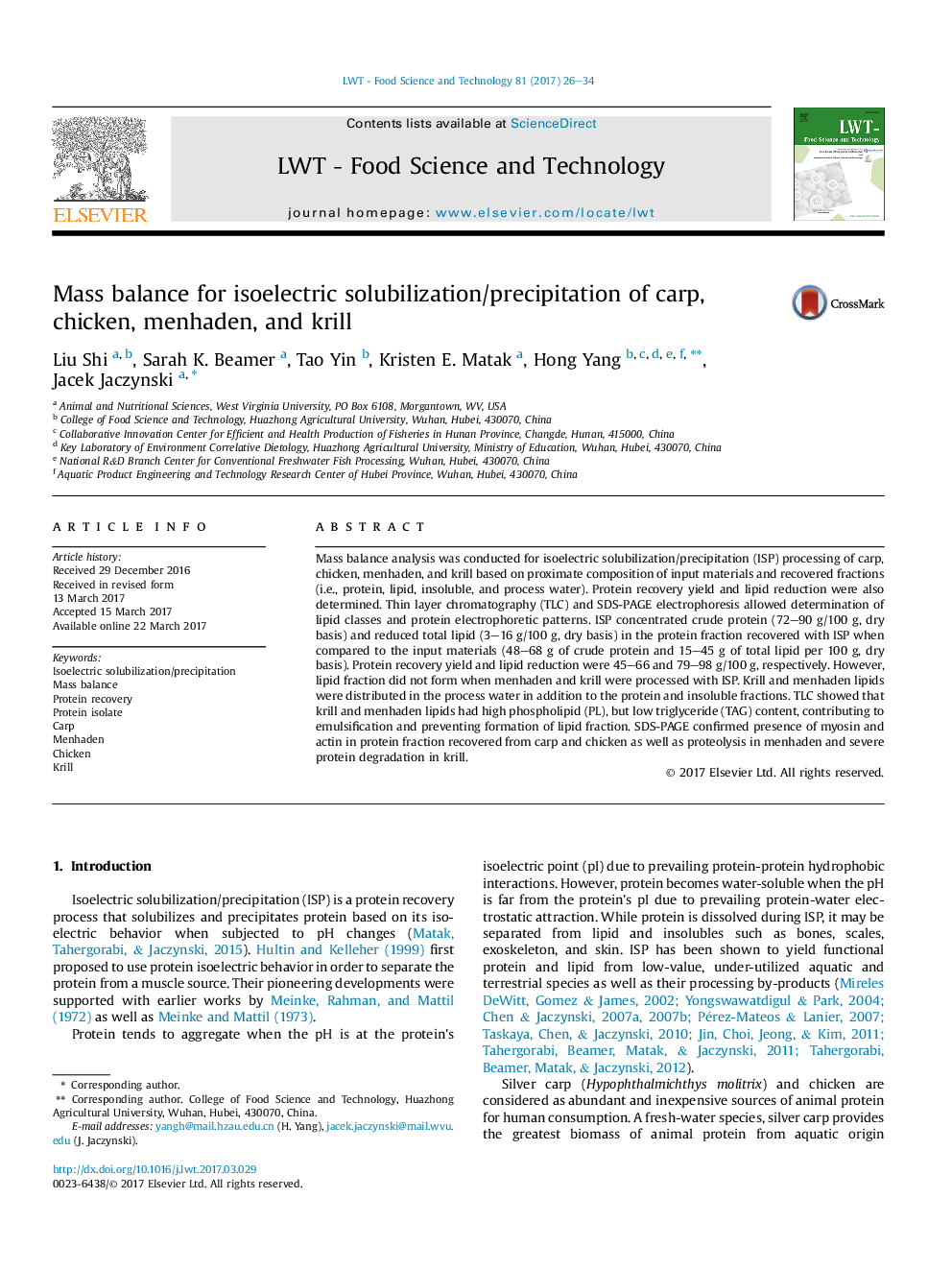| Article ID | Journal | Published Year | Pages | File Type |
|---|---|---|---|---|
| 5768470 | LWT - Food Science and Technology | 2017 | 9 Pages |
â¢Isoelectric solublization/precipitation (ISP) efficiently recovered nutrients from carp, chicken, menhaden, and krill.â¢Proximate composition of recovered fractions was used to determine mass balance.â¢High nutrient recovery suggests ISP can be used for low-value or under-utilized sources.
Mass balance analysis was conducted for isoelectric solubilization/precipitation (ISP) processing of carp, chicken, menhaden, and krill based on proximate composition of input materials and recovered fractions (i.e., protein, lipid, insoluble, and process water). Protein recovery yield and lipid reduction were also determined. Thin layer chromatography (TLC) and SDS-PAGE electrophoresis allowed determination of lipid classes and protein electrophoretic patterns. ISP concentrated crude protein (72-90Â g/100Â g, dry basis) and reduced total lipid (3-16Â g/100Â g, dry basis) in the protein fraction recovered with ISP when compared to the input materials (48-68Â g of crude protein and 15-45Â g of total lipid per 100Â g, dry basis). Protein recovery yield and lipid reduction were 45-66 and 79-98Â g/100Â g, respectively. However, lipid fraction did not form when menhaden and krill were processed with ISP. Krill and menhaden lipids were distributed in the process water in addition to the protein and insoluble fractions. TLC showed that krill and menhaden lipids had high phospholipid (PL), but low triglyceride (TAG) content, contributing to emulsification and preventing formation of lipid fraction. SDS-PAGE confirmed presence of myosin and actin in protein fraction recovered from carp and chicken as well as proteolysis in menhaden and severe protein degradation in krill.
